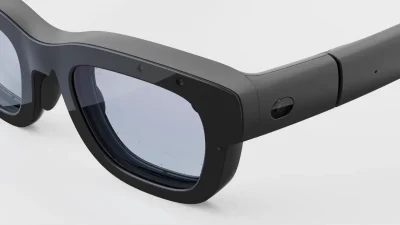Augmented reality marketing has evolved far beyond novelty demonstrations and flashy tech showcases. Today’s businesses demand concrete returns on their AR investments, making measurement strategies absolutely critical for campaign success.
The challenge lies not in the technology itself, but in establishing clear metrics that translate AR engagement into meaningful business outcomes. Traditional marketing measurement approaches often fall short when applied to immersive experiences.
Smart marketers recognize that AR campaigns require specialized tracking methods to capture their unique value propositions. The key involves understanding which metrics actually correlate with revenue growth and customer lifetime value.
Setting Clear Objectives Before Launch
Every successful AR campaign begins with specific, measurable goals that extend beyond engagement vanity metrics. Your objectives should connect directly to business outcomes that matter to stakeholders and budget holders.
Consider what success looks like for your particular industry and customer journey stage. An e-commerce brand might prioritize product visualization leading to purchases, while a real estate company focuses on property tour completions and inquiry generation.
Revenue attribution becomes much clearer when you establish these connections upfront rather than attempting to reverse-engineer success metrics after campaign launch. This foundation guides every subsequent measurement decision.
Essential Metrics for AR Campaign Performance
User engagement depth provides more valuable insights than simple impression counts or download numbers. Track how long users interact with your AR experience and which features capture the most attention.
Conversion pathway analysis reveals how AR interactions influence purchasing decisions throughout the customer journey. Monitor users who engage with AR content and trace their subsequent behaviors across all touchpoints.
Cost per qualified lead through AR channels offers direct comparison points with traditional marketing investments. This metric helps justify budget allocation and guides future campaign optimization efforts.
Technology Integration for Accurate Tracking
Modern AR platforms provide sophisticated analytics capabilities that capture user behavior data in real-time. Integrating these insights with your existing marketing technology stack creates comprehensive performance pictures.
Cross-platform attribution tracking ensures you capture the full customer journey from AR interaction to final conversion. Many users will engage with AR content on mobile devices but complete purchases through different channels.
API connections between your AR platform and customer relationship management systems enable detailed lead scoring and nurturing based on AR engagement patterns. This integration maximizes the value of every interaction.
Calculating True Return on Investment
Direct revenue attribution requires connecting AR engagement data with actual sales transactions. Implement tracking mechanisms that follow users from AR experience through purchase completion.
Customer acquisition cost calculations must include all AR campaign expenses, from development and deployment to ongoing maintenance and optimization efforts. Hidden costs often emerge during extended campaign periods.
Lifetime value considerations become especially important for AR campaigns since immersive experiences often create stronger emotional connections than traditional advertising methods. Track long-term customer behavior patterns to capture this extended value.
Advanced Attribution Modeling
Multi-touch attribution models account for AR’s role within complex customer journeys that span multiple channels and touchpoints. Single-touch attribution typically undervalues AR’s contribution to conversion processes.
Time decay modeling recognizes that AR interactions closer to purchase decisions carry more influence than earlier touchpoints. This approach provides more accurate pictures of AR campaign effectiveness.
Incremental lift testing compares performance between audiences exposed to AR campaigns and control groups receiving traditional marketing messages. This method isolates AR’s specific contribution to business outcomes.
Optimizing Campaigns Based on Data
Real-time performance monitoring enables rapid campaign adjustments that improve ROI throughout active periods rather than waiting for post-campaign analysis. Continuous optimization maximizes every marketing dollar invested.
User behavior patterns within AR experiences reveal optimization opportunities that aren’t apparent through traditional analytics. Heat mapping and interaction tracking guide content and interface improvements.
A/B testing different AR experience elements helps identify the most effective approaches for your specific audience and objectives. Test variations in content, interaction methods, and call-to-action placement.
Industry-Specific Measurement Approaches
Retail AR campaigns often focus on product visualization impact on purchase confidence and return rate reduction. Track how AR product previews influence buying decisions and post-purchase satisfaction levels.
B2B AR applications typically emphasize lead quality improvement and sales cycle acceleration. Measure how AR demonstrations affect prospect engagement depth and time-to-close metrics.
For comprehensive strategies that integrate AR with broader marketing efforts, explore proven approaches at AR Marketing Tips where you’ll find detailed implementation guidance.
Building Long-Term Measurement Frameworks
Sustainable AR marketing success requires measurement systems that evolve with technology capabilities and business objectives. Build flexible frameworks that accommodate new metrics as AR platforms develop additional tracking features.
Quarterly performance reviews should examine both tactical metrics and strategic impact indicators. This dual approach ensures short-term optimization while maintaining focus on long-term business value creation.
Documentation of measurement methodologies enables consistent evaluation across different AR campaigns and time periods. Standardized approaches facilitate meaningful performance comparisons and budget justification processes.
Avoiding Common Measurement Pitfalls
Vanity metrics like app downloads or initial engagement rates provide limited insight into actual business impact. Focus measurement efforts on behaviors that correlate with revenue generation and customer value creation.
Attribution windows that are too narrow miss AR’s influence on extended consideration periods common in higher-value purchases. Adjust tracking timeframes based on your typical customer journey length.
Platform-specific metrics without business context offer little guidance for campaign optimization or future investment decisions. Always connect AR performance data to broader marketing and business objectives.
Future-Proofing Your Measurement Strategy
Emerging AR technologies will introduce new interaction possibilities and corresponding measurement opportunities. Stay informed about platform updates that might enhance your tracking capabilities.
Privacy regulation changes affect data collection and attribution methods across all digital marketing channels. Ensure your AR measurement approaches comply with evolving privacy requirements while maintaining effectiveness.
Cross-platform standardization efforts in AR analytics will eventually simplify measurement processes and improve data accuracy. Prepare for these developments by building flexible measurement frameworks today.





